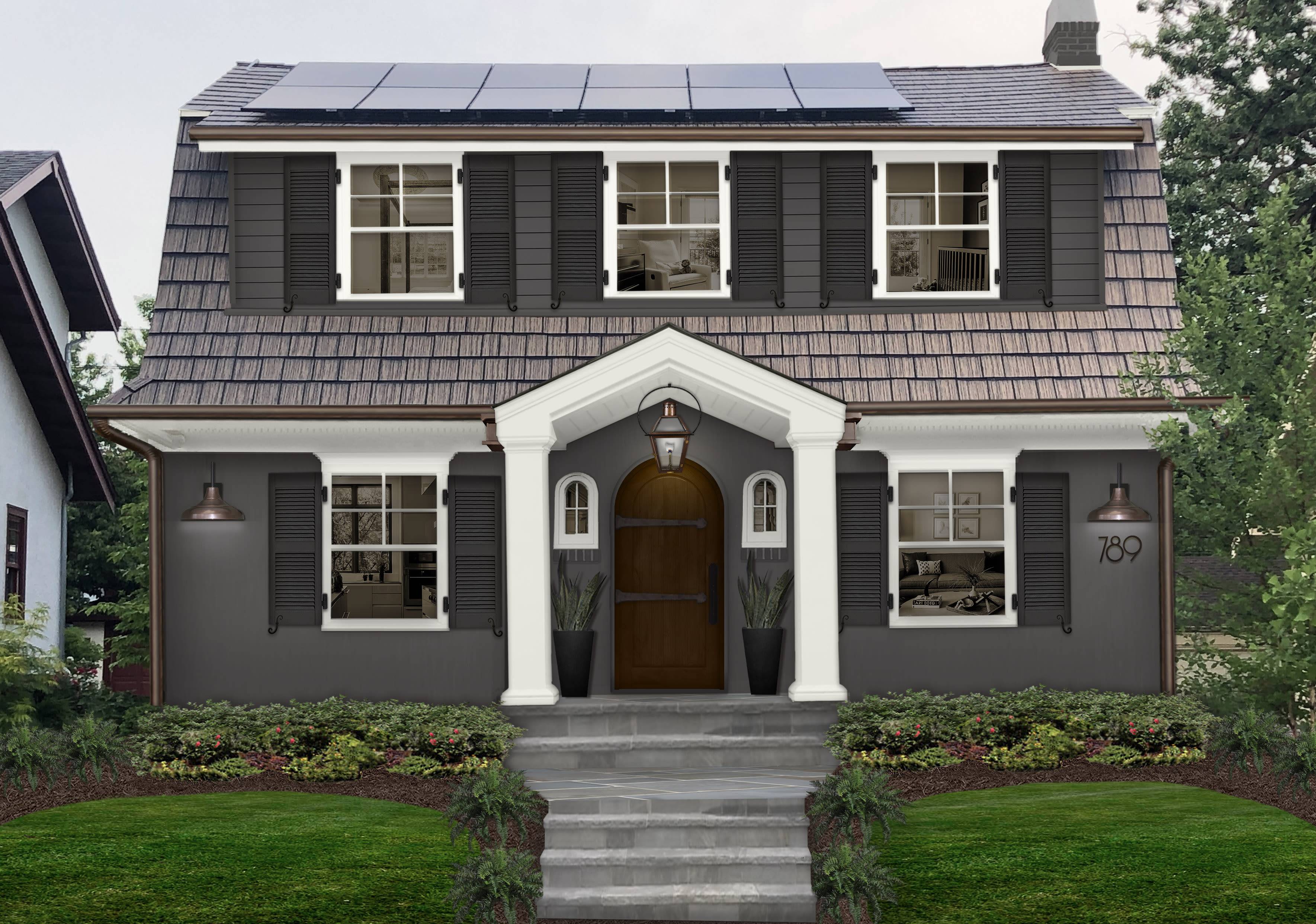
To protect exterior walls of homes from the elements, manufactured home siding is used. It can be made from wood, vinyl or fiber cement. These options will add style to your home and increase its durability. It's important to choose the best type of siding to fit your needs.
Cedar is one of the oldest siding types. It resists decay and moisture. You can also get it in different sizes and shapes. Cedar plank siding can be labor-intensive. You cannot use common screws or galvanized nails to secure the wood. It requires regular maintenance to stay in good condition. It can be factory-finished or stained for a rustic look.
Another great option for manufactured home is the board and Batten style. A thin batten fills in the gaps between wide boards. It can be placed horizontally or vertically. You can choose to have them stained or painted to suit your tastes. For a unique mobile house finish, you might consider faux stone siding. This material is also resistant to fire and insects.

Vinyl siding is the most popular siding option. It offers the traditional look of wood, but is cheaper to install. It is durable and can last for decades unlike other siding options. You can choose from several colors and designs to suit your preferences. If you decide to paint, you will need to apply a protective sealer to prevent oxidation.
Fiber cement, a man-made material, is an excellent alternative to vinyl and wood. It's made using a special blend of cement and sandy sand. It can mimic the appearance of other materials and is impervious to moisture. It is also durable, and it is rot-resistant. It can accent the exterior or interior of a manufactured home. It is usually available with a 15 or 50-year warranty.
It is essential to select the right material when building your home. Your home's energy efficiency can be affected by the material you choose. It can keep your heating/cooling units running more efficiently, which in turn means you spend less on utilities. It is also resistant to water damage.
Although metal siding is often seen as an environmentally-friendly choice, it can be expensive. Metal siding is fireproof, but it can warp or rust if it's not properly maintained. It is not recommended for high humidity as it can show dirt more often than other materials. While it can be painted with some effort, it's not always the best choice for mobile homes.

Plywood and OSB are used frequently for mobile home siding. Plywood, which is thicker than OSB, is also easier to seal. OSB is, however, a more hardy material that can be harder to sand. It also costs more than air dried or oven dried wood. It's not recommended to use aluminum nails for siding because they won't be able to resist rust stains.
FAQ
How can I find a reliable contractor?
Ask family and friends to recommend contractors. Look online reviews as well. You should ensure that the contractor you select has experience in the field of construction you are interested. Check out references and ask for them to provide you with some.
How do you renovate a house with no money?
The following steps should be taken when renovating a house without any money:
-
Plan your budget
-
Find out what materials you need
-
Decide where you want them to go
-
Make a list of things you need to buy
-
Calculate how much money is available
-
Plan your renovation project
-
Start working on your plans
-
Do your research online
-
Ask family and friends for their help
-
Get creative
What should I do before renovating a home?
The first step in fixing up a home is to get rid of any clutter. Next, clean out any moldy areas. You will need to clean up the exterior and paint.
What room do I need to remodel first?
The heart of any home's kitchen is its kitchen. It's where you spend most of your time eating, cooking, entertaining, and relaxing. Start looking for ways that you can make your kitchen functional and more attractive.
The bathroom is an important part of any house. It is a place where you can feel at ease and privacy as you perform daily tasks such as brushing teeth, bathing, shaving, and getting ready for sleep. Consider adding storage to these rooms and installing a tub instead of a bathtub. You may also want to replace old fixtures with modern ones.
Is it better to hire a general contractor or a subcontractor?
Hiring a general contract is typically more costly than hiring subcontractors. General contractors usually have many employees. This means that they charge their clients much more for labor. A subcontractor hires only one employee so they charge less per an hour.
What is the cost to renovate a house?
The type of material, the project size and the complexity of renovations will all impact the cost. Some materials like wood need additional tools, like saws or drills, while others like steel don't. The price for renovations will also vary depending on whether you would like your contractor to do all of the work for you or if it is something you prefer.
The average home improvement project cost is between $1,000 and $10,000. The total cost for a home renovation project would be $5,000 to $25,000 if you hire professionals. You could also spend as much as $100,000 if you do it all yourself.
There are many factors that influence the final cost of renovations. The cost of renovation depends on the material used (e.g. They include the type of material used (e.g., brick vs. concrete), the size and number of workers involved, as well as the length of each project. You must always keep these factors in mind when estimating the total cost of renovation.
How long does it usually take to renovate your home?
It all depends on the project's size and how many hours you spend each week. The average homeowner spends three to six hours each week working on the project.
Statistics
- Most lenders will lend you up to 75% or 80% of the appraised value of your home, but some will go higher. (kiplinger.com)
- ‘The potential added value of a loft conversion, which could create an extra bedroom and ensuite, could be as much as 20 per cent and 15 per cent for a garage conversion.' (realhomes.com)
- They'll usually lend up to 90% of your home's "as-completed" value, but no more than $424,100 in most locales or $636,150 in high-cost areas. (kiplinger.com)
- A final payment of, say, 5% to 10% will be due when the space is livable and usable (your contract probably will say "substantial completion"). (kiplinger.com)
- Rather, allot 10% to 15% for a contingency fund to pay for unexpected construction issues. (kiplinger.com)
External Links
How To
How do I plan a whole-house remodel?
Planning a whole house remodel requires careful planning and research. There are many things you should consider before starting your project. It is important to determine what type of home improvements you are looking to make. There are many categories that you could choose from: kitchen, bathroom or bedroom; living room or dining room. Once you've chosen the category you want, you need to decide how much money to put towards your project. If you are new to working in homes, budget at least $5,000 for each room. You might be able get away with less if you have previous experience.
Once you know how much money your budget allows you to spend, then you will need to decide how big a job it is you are willing to take on. For example, if you only have enough money for a small kitchen remodel, you won't be able to add a new flooring surface, install a new countertop, or even paint the walls. On the other side, if your budget allows for a full renovation of your kitchen, you'll be able do just about any task.
Next, find a contractor that specializes in the project you are interested in. You will be able to get great results and avoid a lot more headaches down in the future. Once you have hired a contractor, gather materials and other supplies. Depending on the project's size, you may have to buy all of the materials from scratch. There are many stores that offer pre-made products so it shouldn't be difficult to find what you need.
Once you've collected all the materials you will need, you can begin to plan. To begin, draw a sketch of where you would like to place furniture or appliances. Next, design the layout of your rooms. Remember to leave enough space for outlets and plumbing. You should also place the most frequently used areas closest to the front door, so visitors have easy access. The final step in your design is to choose colors and finishes. You can save money by using neutral colors and simple designs.
Now that your plan is complete, it's time you start building! Before you start building, check your local codes. Some cities require permits while others allow homeowners to build without one. When you're ready to begin construction, you'll first want to remove all existing floors and walls. Next, you'll need to lay plywood sheets in order to protect your new floors. Then, you'll nail or screw together pieces of wood to form the frame for your cabinets. Lastly, you'll attach doors and windows to the frame.
When you're done, you'll still have a few finishing touches to do. For example, you'll probably want to cover exposed pipes and wires. This can be done with plastic sheeting and tape. You'll also want to hang pictures and mirrors. You should always keep your work area clean.
These steps will help you create a functional, beautiful home that is both functional and attractive. Now that you are familiar with how to plan a whole home remodel project, it is time to get started.